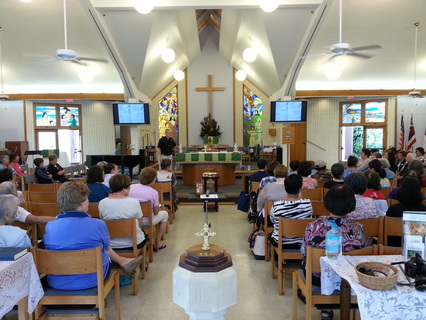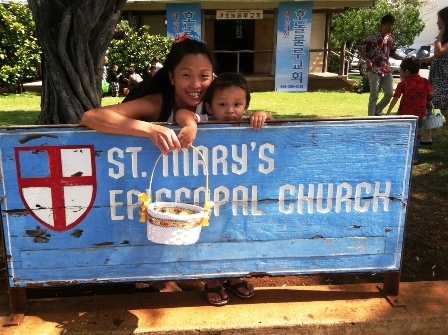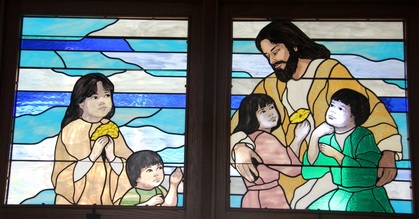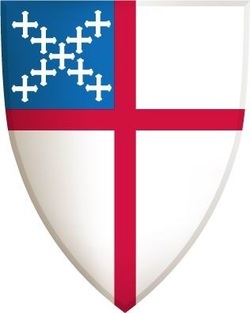About St. Mary's . . .
|
Worship
Sundays 9:00-10:00AM. Upbeat, kid-friendly, informative & inspiring. A unique blend of contemporary and traditional music. Food for the mind, body, and soul! History
Just after the turn of the century, the area called Moiliili, which then was only a sleepy settlement on the outskirts of Honolulu, was chosen as a site for mission work by the Missionary District of Honolulu. Key to the work in these earliest days was a mission house constructed in 1912 on the present site of St. Mary's parish grounds. Night classes for adults, a day school instructing girls in sewing and house-keeping skills, education in the Faith, a free neighborhood medical dispensary and other ministries were some of the first uses of the new facility. The mission grew steadily, and in 1917 it was able to build a church building, followed in 1918 with the opening of the doors of St. Mary's Home, an institution for the care of homeless children. It housed 219 children before its closing in 1949. Throughout much of the early period there was no resident clergyman, and services were conducted by priests from the cathedral or neighboring congregations. As the mission grew, so did the neighborhood around it. The "sleepy settlement" became part of the rapidly expanding city of Honolulu. It is only ten blocks from the burgeoning recreation area at Waikiki, and even closer to the University |
History (continued)
of Hawaii. St. Mary's is located on a street that has become a major thoroughfare in a community now housing tens of thousands of people. This Christian "Presence" continues to offer much potential Light in an essentially non-Christian neighborhood. (The area around the church presently includes four Buddhist temples, and one Shinto shrine, at last count.) In 1958, the congregation razed the mission house, moved the church to a new foundation on the former mission house site and built a substantial new parish house on the site previously occupied by the church. The move was a manifestation of what had gradually become clear in the previous nine years - that St. Mary's had evolved as a church with attendant ministries rather than a ministry with an attendant church. In the late '50s a preschool was also built on St. Mary's property. In the late '60s and early '70s two things of great importance took place: 1) the congregation became a parish; and 2) a number of people at St. Mary's became involved in the charismatic renewal. Achieving parish status was important to the congregation's understanding of its growth in purpose. No longer was it a "project" of the diocese; it accepted responsibility for its own life and mission. The charismatic renewal became the center around which the parish developed a unique character.
In the mid '80s, another era of life was initiated with the construction of a new church building to accommodate the growing congregation. The former parish hall was converted into the main church and the lovely old church building was preserved and used for the early Sunday service, special occasion services, small weddings and funerals. In the early '90s, St. Mary's became concerned over issues like the ordination of homosexuals in the Episcopal Church. Many of our parishioners considered these new positions to be contrary to biblical revelation, traditional church doctrine, family values, and Christian moral principles. After much prayer and discussion, the former Rector, Vestry, and over half the congregation dissociated themselves from the Episcopal Church (USA). Those who remained, though sharing similar concerns, chose to work within the denomination for reform. This challenging transition opened the doors of service, commitment, and a revitalized ministry for St. Mary's and the community it continues to serve. |





